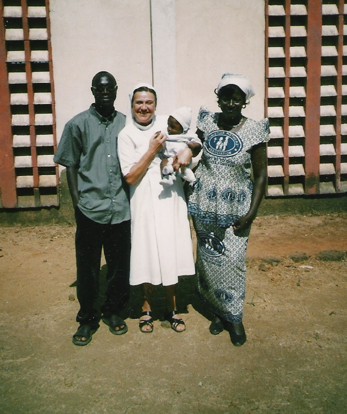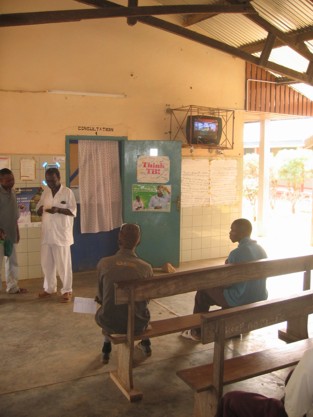
Michael Abaala
The Wiaga Clinic and its History

Wiaga Clinic was started in the early 1950s, when the White Fathers, the Missionaries of Africa, worked here. They were concerned about the health problems of the people. At that time there was no health facility in this area.
Rev. Father Philip Marneffe, himself the son of a doctor of medicine, was the founder of the clinic. At first he visited sick people in their homes and compounds and helped them. From the Mission House he would come out day and night to treat sick people.
He then built a single room at the site of the present clinic. In the early years of the clinic, services and treatment were free of charge. One only needed to come along with a small stone and drop it in a box before being given the medicine for his illness. The idea of the small stone was to help the Rev. Father keep track of the total number of patients who reported for treatment per day.
Later on the Rev. Father had to ask for the help of the Sisters of Mary Immaculate (SMI) to run
the clinic. As attendances continued to increase, an additional room was built to cater for the
growing numbers.

These rooms were used as treatment and dressing rooms. Later, both a Dispensary and a Ward were added. The clinic expanded to include a laboratory, a consultation room, two large wards a maternity block and delivery room. The first midwife was Ms Adaaminyini Patricia, now known as Ajaab Patricia. Later she was followed by Ms Veronica Kampilie and Ms. Felicia Azantinlow.
With the rapid growth of the clinic the Fathers had to bring in more professionals to help. The first to come was personnel from Voluntary Services Overseas (VSO). With the increasing number of patients gradually more buildings had to be added.
In 1978,
invited by Bishop Akanlu, the Alexian Brothers from Ireland took over the administration of the clinic under the
Diocesan Health Administration (DHA). In 1992 they had to leave due to shortage of personnel.

For two years I and Miss Cecilia Amoak, the midwife, both natives of Wiaga, continued the work with the help of the “Missionaries of Africa” of the Parish.
Finally, in January 1994, the Missionary Sisters, “Servants of the Holy Spirit” (SSPS) took over the management of the clinic up to the present time.
The clinic has now two consultation rooms, four wards and an office for administrative purposes equipped with a computer and its accessories. Other services provided by the clinic include a Primary Health Centre to take care of infants from 0-5 years of age and pregnant mothers, a Family Planning Unit and an Out Reach Service Team.
The clinic is also connected to the National Grid (Volta River Authority Electricity). It has 27 beds and an Ambulance to carry seriously sick persons from the villages to the clinic for treatment or to Sandema Hospital, which is the only hospital in the Bulsa District.
Today, three sisters of the SSPS (Servants of the Holy Spirit) work in the clinic:
Rev. Sr. Diana Ofosu, a Ghanaian, is undertaking further studies,
Rev. Sr. Adelajda, from Poland,
Rev. Sr. Elzbieta Skoda from Poland
Rev. Sr. Katherine Quigley from Ireland (Superior), who teaches in Azenaab Primary School for girls.
